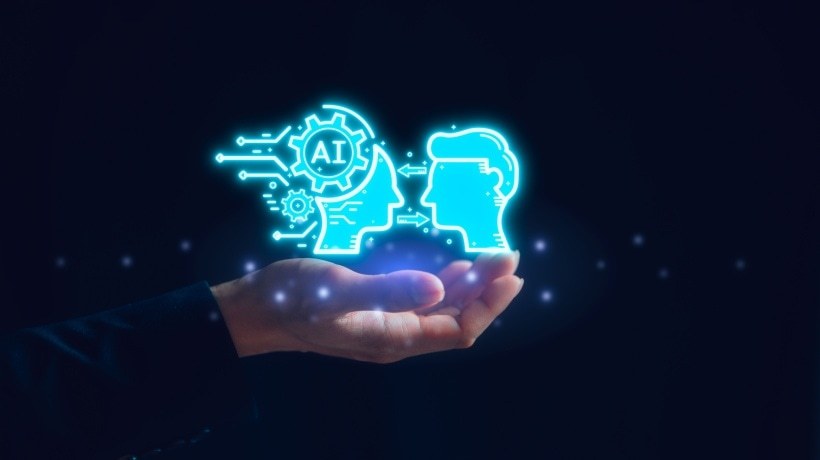Exploring How The Roles Of L&D Professionals Will Change In The Age Of AI
There's no denying that Artificial Intelligence (AI) has become integral in our lives, completely changing how we live, work, and learn. Its impact on the world of Learning and Development (L&D) is already evident, transforming the way we create and distribute content, making training more dynamic, and enhancing the ability of L&D professionals to identify and address the needs of learners. However, since AI is still in its early stages, the future holds many more transformations for the L&D industry and the role of L&D professionals in the age of AI. In this article, we will discuss a few ways in which AI is reshaping L&D as well as some of the skills L&D experts will have to develop to keep pace.
How Will AI Transform The World Of L&D?
Streamlined Creation Of L&D Content
Traditionally, L&D content development required L&D professionals to gather, create, and curate content for weeks or even months. Now, Artificial Intelligence can reduce that time to a few hours or days. With the power of generative AI, content can be produced in different formats, including text, image, audio, and video. Additionally, it can be integrated with Artificial Intelligence, Augmented Reality (AR), and gamification to create a more dynamic and engaging learner experience. In the past, accomplishing that demanded significant technical skills and work hours, often pushing L&D teams beyond their capabilities. Now, L&D professionals can leave the tedious work to AI and focus on ensuring that the material successfully meets the learners' needs.
Highly Personalized Learning Experiences
Personalization has long been a priority for L&D experts, who carefully assess the needs and preferences of their audience before designing learning content. Artificial Intelligence does the same, but with a speed no human team can match. By automatically gathering data, AI can quickly gauge a learner's current knowledge level, skill gaps, learning preferences, development goals, interests, etc. Then, AI makes real-time adjustments to the learning path, modifying the difficulty of the learning content, suggesting additional resources, or providing extra help to prevent frustration. In this scenario, a team of L&D experts would have to return to the drawing board to achieve this level of personalization. In contrast, AI instantly creates a highly personalized learning journey that is engaging and effective for learners.
Integrating Learning In The Flow Of Work
As industries continue to grow and evolve rapidly, employees often find themselves needing to quickly learn and apply new skills. In the age of AI, L&D professionals can make this process easier than ever by seamlessly integrating learning into employees' daily routines. Specifically, AI can automatically present employees with the specific piece of information they need to complete a task, help a customer, or use a tool. This support is delivered at the exact moment employees need it, with the added benefit of not forcing them to pause what they are doing to access different platforms or applications. This way, employees adopt a continuous learning approach, always seeking knowledge and enhancing their skills without compromising their efficiency or output.
Shifting The Role And Responsibilities Of L&D Professionals
One of the major ways in which AI is transforming the world of learning can be seen in the role of L&D professionals. The main change is that since AI is taking over repetitive, time-consuming, and less creative tasks, L&D experts have more time to focus on strategizing and organizing how the training content can be used most effectively. This shift requires them to add an additional set of soft skills to their technical expertise, as they are more likely to be required to solve issues, adapt training strategies to meet learners' needs, and support their teams in making the most out of their AI-powered training courses. In the following section, we will explore the specific skills L&D professionals need to cultivate to thrive in the age of AI-supported learning.
Skills L&D Professionals Need To Keep Up With The Age Of AI
1. Data Fluency And AI Literacy
AI technologies can generate a wealth of information and data. Yet, there is little good they can do if L&D experts don't know how to analyze and interpret them. Therefore, a crucial skill L&D professionals need in the age of AI is data fluency. They must also understand how AI operates within the learning environment to maximize its effectiveness. This includes developing familiarity with the tools that utilize AI and knowing how the learners are expected to interact with them. Cultivating these tools will empower L&D experts to utilize AI data to make strategic decisions to offer their audience an optimal learning experience and help them achieve their learning goals.
2. Strategic Thinking
At times, professionals worry that AI is going to replace them, but that's not really the case. Although AI is great at gathering data, highlighting patterns, and other iterative tasks, the human factor is still necessary to make decisions, set priorities, and manage changes and arising needs. In other words, despite AI's many virtues, strategic thinking is still an exclusively human privilege. It is not AI but L&D professionals who will set short and long-term goals for their learning strategy and audience, make necessary adjustments to adapt to new circumstances, prioritize issues, anticipate the unknown, employ their creativity to come up with innovative ideas, and ensure long-term success by solving any problems that might arise.
3. Human-Centered Design
When L&D professionals have to spend countless hours designing and creating learning content, it's easy for them to lose sight of their ultimate goal, which is to meet learner needs. In the era of AI, however, they can relieve themselves of these time-consuming tasks and focus on enhancing learner engagement through human-centered design. This involves thoroughly exploring learner needs, knowledge gaps, interests, and goals, as well as their limitations in time, attention, physical capabilities, etc. With the help of AI, they can quickly and easily extract the necessary information to build a learning experience that is engaging and inclusive, thus maintaining learner interest and attention for longer.
4. Leadership And Coaching
In the era of AI, L&D professionals must focus more on being effective leaders than on any of their previous content design and development responsibilities. Although AI is quite efficient in identifying patterns and making predictions, it can't prepare employees for upcoming changes. This is where leadership enters to communicate with L&D teams with transparency and ensure that they are ready to face potential challenges. The same applies to skill development, which is a significant priority as AI evolves. Leaders of L&D teams must leverage the insights provided by AI and have meaningful conversations with employees to identify the best personal development plans that will increase engagement and organizational success.
Ushering L&D Professionals Into The Age Of AI
Artificial Intelligence is changing and optimizing the way we learn, speeding up content development, creating highly personalized learning experiences, and making learning a seamless part of a person's daily routine. Another significant change is the transformation of the role of L&D experts. In the era of AI, L&D professionals are freed from repetitive and time-consuming tasks, and their role evolves to focus on strategic thinking, learner-centered design, leadership, and coaching. This way, a successful collaboration between humans and AI can be accomplished, maximizing the capabilities of new technologies and allowing learners to achieve personal growth and professional success.






![Creating In The Age Of AI: How Generative AI Content Is Reshaping eLearning [eBook Launch]](https://cdn.elearningindustry.com/wp-content/uploads/2025/04/Creating-In-The-Age-Of-AI-How-Generative-AI-Content-Is-Reshaping-eLearning-eBook-Launch.jpg)

